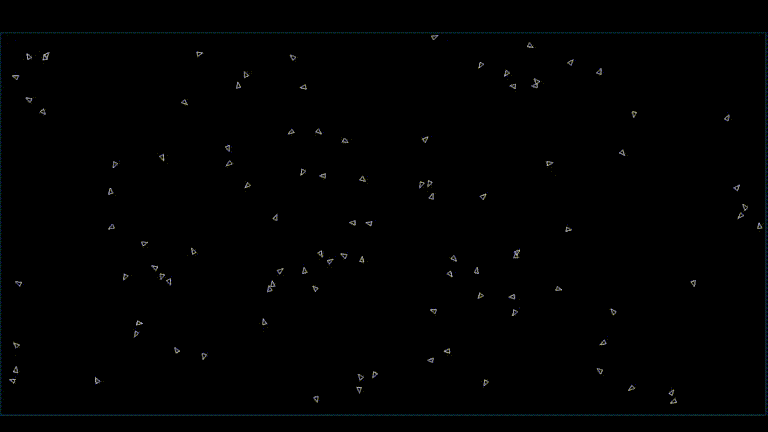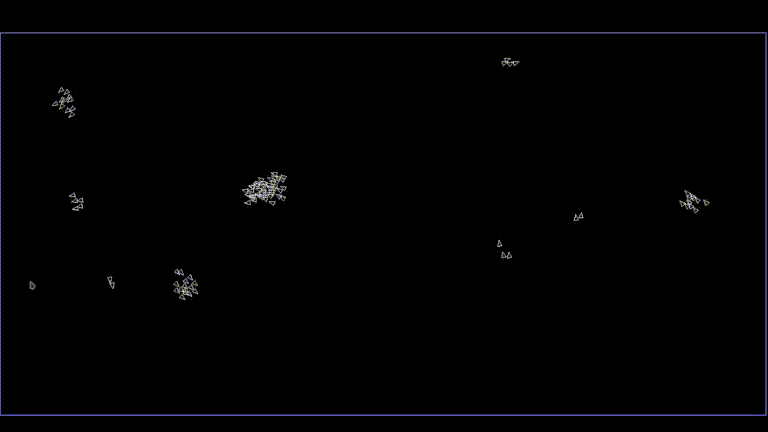Simple simulation of Boid artificial life program initially developed by Craig Reynolds in 1986.
The main source that I followed while developing the simulation is Boids - Cornell ECE, I appreciate the detailed explanation and the code provided.
This project is licensed under the GNU GPL-3.0 license.
Feel free to use the source code. Referring to the repository would be very much appreciated.
Project is currently compiled with GNU G++ 13.2.1.
The only third-party dependency is SDL2. Used version of SDL2 in project is 2.28.5, should work as long as it is SDL2 and not SDL.
For compiling and linking rules GNU Make 4.4.1 was used. After downloading dependencies, make sure to change the include paths inside the Makefile.
# change the paths for '-I'
CC := g++
CFLAGS := -Wall -std=c++11 -I/usr/include/SDL2 # here
TEST_CFLAGS := -Wall -std=c++11 -Iinclude/SDL2 -Isrc/ # and here
LDFLAGS := -lSDL2 -lSDL2_image
...
After fulfilling dependencies, download or clone the project and use Makefile to easily compile:
> make all
> make run
Since SDL2 is a cross-platform media library, output should work on Windows, MacOS and Linux.
As with most artificial life simulations, Boids is an example of emergent behavior; that is, the complexity of Boids arises from the interaction of individual agents (the boids, in this case) adhering to a set of simple rules. The rules applied in the simplest Boids world are as follows:
- Separation: steer to avoid crowding local flockmates
- Alignment: steer towards the average heading of local flockmates
- Cohesion: steer to move towards the average position (center of mass) of local flockmates
Source: Wikipedia Boids
The simulation allows you to:
- Speed up/down the simulation using
qandekeys - Toggle the debug mode for seeing each agents' visual and protected range using
dkey - Restart the simulation using
rkey
Speeding Up/Down
Debug Mode
src/directory contains the source codesrc/main.cppis the entry point of the programsrc/game.hppcontains the declarations of the core functionssrc/game.cppcontains the implementation of core functionssrc/agent.hpphas the struct of the boid agentssrc/master.cpphas the struct of all the configurations for the simulation
stable/directory contains the stable outputstable/boids.followis the executable
Will be updated soon.



